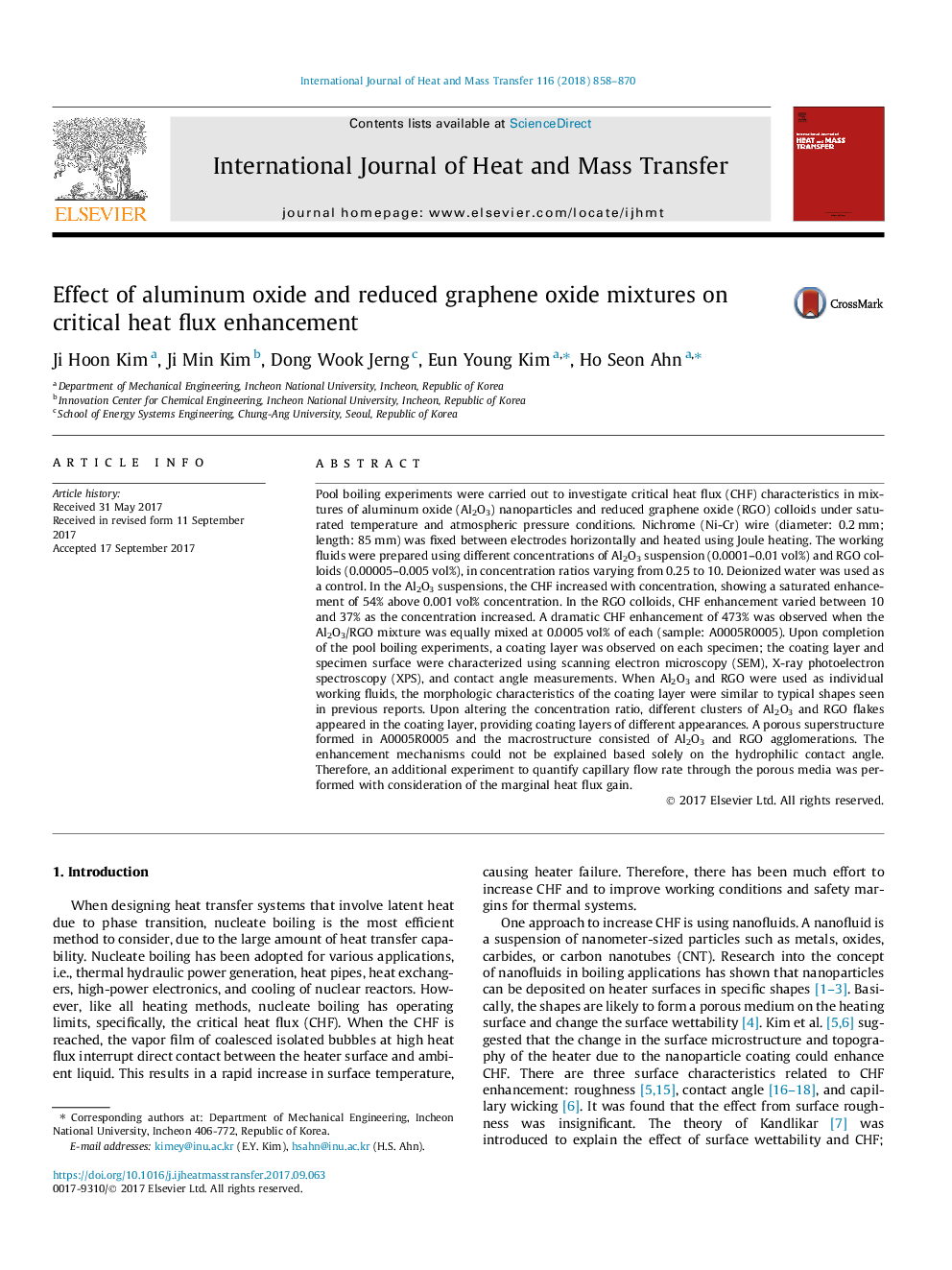| کد مقاله | کد نشریه | سال انتشار | مقاله انگلیسی | نسخه تمام متن |
|---|---|---|---|---|
| 4993803 | 1458024 | 2018 | 13 صفحه PDF | دانلود رایگان |
عنوان انگلیسی مقاله ISI
Effect of aluminum oxide and reduced graphene oxide mixtures on critical heat flux enhancement
ترجمه فارسی عنوان
اثر اکسید آلومینیوم و کاهش ترکیبات اکسید گرافین بر افزایش جریان شار حرارتی
دانلود مقاله + سفارش ترجمه
دانلود مقاله ISI انگلیسی
رایگان برای ایرانیان
موضوعات مرتبط
مهندسی و علوم پایه
مهندسی شیمی
جریان سیال و فرایندهای انتقال
چکیده انگلیسی
Pool boiling experiments were carried out to investigate critical heat flux (CHF) characteristics in mixtures of aluminum oxide (Al2O3) nanoparticles and reduced graphene oxide (RGO) colloids under saturated temperature and atmospheric pressure conditions. Nichrome (Ni-Cr) wire (diameter: 0.2Â mm; length: 85Â mm) was fixed between electrodes horizontally and heated using Joule heating. The working fluids were prepared using different concentrations of Al2O3 suspension (0.0001-0.01Â vol%) and RGO colloids (0.00005-0.005Â vol%), in concentration ratios varying from 0.25 to 10. Deionized water was used as a control. In the Al2O3 suspensions, the CHF increased with concentration, showing a saturated enhancement of 54% above 0.001Â vol% concentration. In the RGO colloids, CHF enhancement varied between 10 and 37% as the concentration increased. A dramatic CHF enhancement of 473% was observed when the Al2O3/RGO mixture was equally mixed at 0.0005Â vol% of each (sample: A0005R0005). Upon completion of the pool boiling experiments, a coating layer was observed on each specimen; the coating layer and specimen surface were characterized using scanning electron microscopy (SEM), X-ray photoelectron spectroscopy (XPS), and contact angle measurements. When Al2O3 and RGO were used as individual working fluids, the morphologic characteristics of the coating layer were similar to typical shapes seen in previous reports. Upon altering the concentration ratio, different clusters of Al2O3 and RGO flakes appeared in the coating layer, providing coating layers of different appearances. A porous superstructure formed in A0005R0005 and the macrostructure consisted of Al2O3 and RGO agglomerations. The enhancement mechanisms could not be explained based solely on the hydrophilic contact angle. Therefore, an additional experiment to quantify capillary flow rate through the porous media was performed with consideration of the marginal heat flux gain.
ناشر
Database: Elsevier - ScienceDirect (ساینس دایرکت)
Journal: International Journal of Heat and Mass Transfer - Volume 116, January 2018, Pages 858-870
Journal: International Journal of Heat and Mass Transfer - Volume 116, January 2018, Pages 858-870
نویسندگان
Ji Hoon Kim, Ji Min Kim, Dong Wook Jerng, Eun Young Kim, Ho Seon Ahn,
